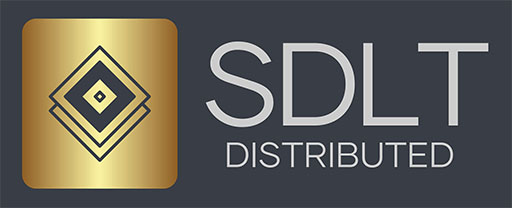
Is Tokenization the Future of Capital Markets?: By Vijay Mayadas
Will the blockchain revolutionize capital markets? Top financial executives are divided.
Roughly half (48%) of the more than 500 leading financial executives participating in Broadridge’s fifth annual Digital Transformation & Next-Gen Technology Study believe distributed ledger technology (DLT) is creating new opportunities in the capital markets ecosystem. The other half remain unconvinced.
Executives—or anyone else for that matter—who are still skeptical about the impact blockchain/DLT will have on capital markets should take a close look at how the technology is already changing other specific markets. In markets like fine art and real estate, “tokenization” enabled by DLT is allowing individual investors to own fractions of assets. These fractions, which take the form of tokens tradable through blockchain networks, allow investors to freely buy and sell their stakes, and to use these stakes as collateral for loans and other transactions.
The introduction of tokenization is having another profound effect on these markets. It is reducing, or even entirely eliminating, the friction entailed with executing and processing transactions for these unique and illiquid assets. As a result, the process of buying and selling these assets is becoming much more efficient. That goes for both local investors and for investors around the world who can much more easily participate.
All these enhancements are unlocking previously impossible levels of liquidity. The survey found that nearly half (46%) of respondents agree that over the next several years, all banking platforms will leverage blockchain and deposit tokens to reduce costs and improve liquidity. As increased accessibility and transparency attract new investors into the space, liquidity should continue to increase, creating a type of virtuous circle.
Tokenization at Work
I believe the same process will play out across the capital markets. Theoretically, every asset trading today in the capital markets can be tokenized. It could dramatically reduce transaction friction, making trading more efficient. Smart contracts can automate many of the back-office functions that currently slow trades. The fact that trades of tokenized assets can settle immediately will accelerate markets and dramatically cut both costs and risks.
There are already live examples of tokenization at work in capital markets. In 2016, when I was President of Fixed Income at Broadridge, my team developed a proof-of-concept to tokenize US treasuries and apply smart contracts to create efficiencies in bilateral repo transactions. After a few years of testing and legal work we officially launched our DLT Repo Platform in 2021. This platform applies blockchain technology, tokenization, and smart contracts at scale to the global repo market, the core financing mechanism of the capital markets. The platform’s goal is to unlock new levels of efficiency in that market, helping global institutions increase liquidity, reduce counterparty risk and realize millions in costs savings. Today, more than $1.5 trillion in repo trades are executed on the platform every month.
Overcoming Obstacles
Of course, we are a long way from the full tokenization of capital markets, and there is no shortage of obstacles that could slow or maybe even derail that transition entirely. One of the biggest current challenges is regulation, or rather, the lack of a consistent and established regulatory framework for digital assets. Both “defi” developers and investors are forced to move cautiously in this space in the absence of clear regulatory guidelines that remove uncertainty about how tokenized assets and DLT transactions will be treated in the future. Regulators, meanwhile, are working to address critical issues like investor protection while struggling to keep up with innovation and understand the policy implications of a rapidly expanding DLT-based marketplace.
Security concerns are also impeding the growth of tokenization by making investors—especially large institutional investors—hesitant to invest heavily in digital assets. The FTX debacle and a series of prominent hacks of exchanges and blockchain networks have made it hard for developers to fully win investors’ trust. The industry will have to use a combination of cybersecurity innovation and deft messaging to create a sense of confidence that enables digital assets to assume a place as a regular capital markets staple.
There are other technical and market-based challenges that will have to be overcome as well. For example, digitization has helped make today’s capital markets highly integrated across products, counterparties, markets and geographies. But currently, blockchain networks have little connection to traditional financial systems. To truly integrate digital assets into capital markets, developers will have to achieve seamless interoperability between blockchains and traditional financial infrastructure.
I firmly believe the industry will overcome these obstacles, and that the long-term future of capital markets will eventually be one of near-universal tokenization. Getting to that future will take time, effort, and most importantly, collaboration between technology developers, traditional financial market players and regulators. The first steps in that journey have already been taken. From here, the biggest and fastest advances will come when developers use DLT and tokenization to help solve real-world problems. That’s the strategy Broadridge took in repo markets. Other developers are following the same path in asset management, payments and other areas. The goal is simple: to demonstrate that tokenization can safely provide real benefits to existing investors and financial institutions, while drawing in new participants and democratizing capital markets.
